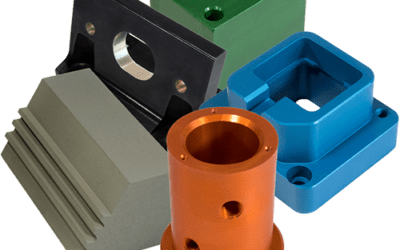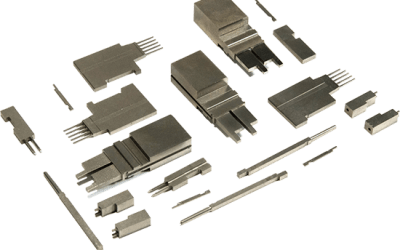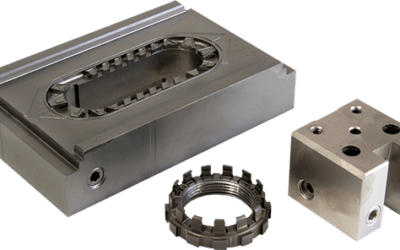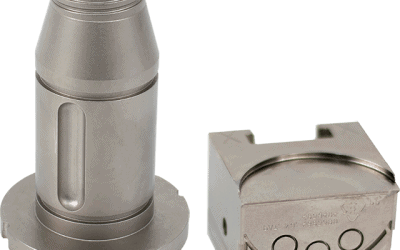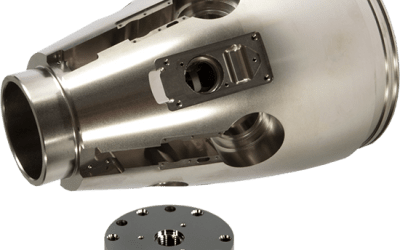The Difference Between Electroless Plating and Anodizing

The Difference Between Electroless Plating and Anodizing
The purpose of this post is to outline the differences between and benefits of Electroless Plating and anodizing, as well as to provide examples of common applications each are used for. Put simply, electroless plating, also referred to as chemical plating, is a process that involves immersing a substrate (typically a metal or plastic) in a reducing agent that when catalyzed deposits a metal coating on the immersed piece, generally with the goal of increasing durability and providing anti-corrosion protection. Anodizing, by comparison, is another common anti-corrosion process, but instead of chemicals, it uses electricity to increase the thickness of a metal surface’s natural oxide layer. While there is more to understand technically about each process, the above will serve as a suitable introduction as we begin to outline common applications for each.
Electroless Plating Advantages and Common Applications Including Electroless Nickel Plating
Electroless Plating has become a trusted anti-corrosion process, and some of the primary reasons have to do with its efficiency, flexibility, and consistency. This process is relatively simple in that it does not require the use of electrical power, sophisticated jigs and racks, or complex filtration methods. Electroless plating produces an even coating even along irregularly shaped objects and can present in a range of finish styles including bright, semi-bright, and matte to allow for aesthetic flexibility. This method can also be utilized to apply a conductive surface on a non-conductive substrate to allow it to be utilized in a variety of applications that require conductivity. At PFI we frequently utilize electroless nickel boron nitride coatings for applications such as mold coatings over rubber. Our electroless nickel plating solutions are also used to repair bores, molds, and EDM areas. This method is excellent for surfaces that encounter high heats, as the plating is exceptionally durable with a melting range of roughly 1,600°F.
Anodizing Basics and Common Applications
Typically used on aluminum and other metal alloy substrates, anodizing is an ideal option when a substrate requires a cost-effective corrosion resistance solution that affords color stability and mechanical durability. Anodizing is also popular because it can preserve the substrate’s glossy, metallic finish, which is desired in many products. Though aluminum already has a long lifespan, anodizing will further extend this while simultaneously reducing the need for maintenance. The range of applications for anodizing is broad, though common examples include its use on components of appliances, display cases, cooking pans, grills, boats and more. To ensure PFI can process anodizing for a broad array of substrate, we specialize in both Type II and Type III anodizing, including anodizing for Mil-A-8625 Spec.
Alternatives When Electroless Plating and Anodizing in Pennsylvania Are Not the Right Fit
Now that we have outlined the difference between electroless plating and anodizing, it is worth mentioning that there are scenarios where neither is the perfect solution for a customer’s plating needs. Acknowledging this, PFI has developed our proprietary Dura Slick coating to serve as an ideal option for various injection molding industry applications. This non-stick metal plating solution is perfect for a range of applications including its use in mold coatings as well as for the tool and die industry to name a couple.
Which is best: Electroless Plating or Anodizing?
As outlined above, the difference between electroless plating and anodizing largely comes down to the process and intent of each method. Deciding which option is better will come down to the intended application in any given project. At PFI’s Pennsylvania headquarters, we are experts at various forms of electroless plating and anodizing, including electroless nickel plating, and we work with contract manufacturing customers to determine the right solutions for their unique needs. Regardless of the process we decide is best suited to your company’s needs, you can rest assured that PFI’s team of elite professionals will be able to get the job done promptly and effectively each time. Whether you need help with mold coatings or improving the anti-corrosive layer of a substrate, PFI has you covered with one of our sophisticated processes.
